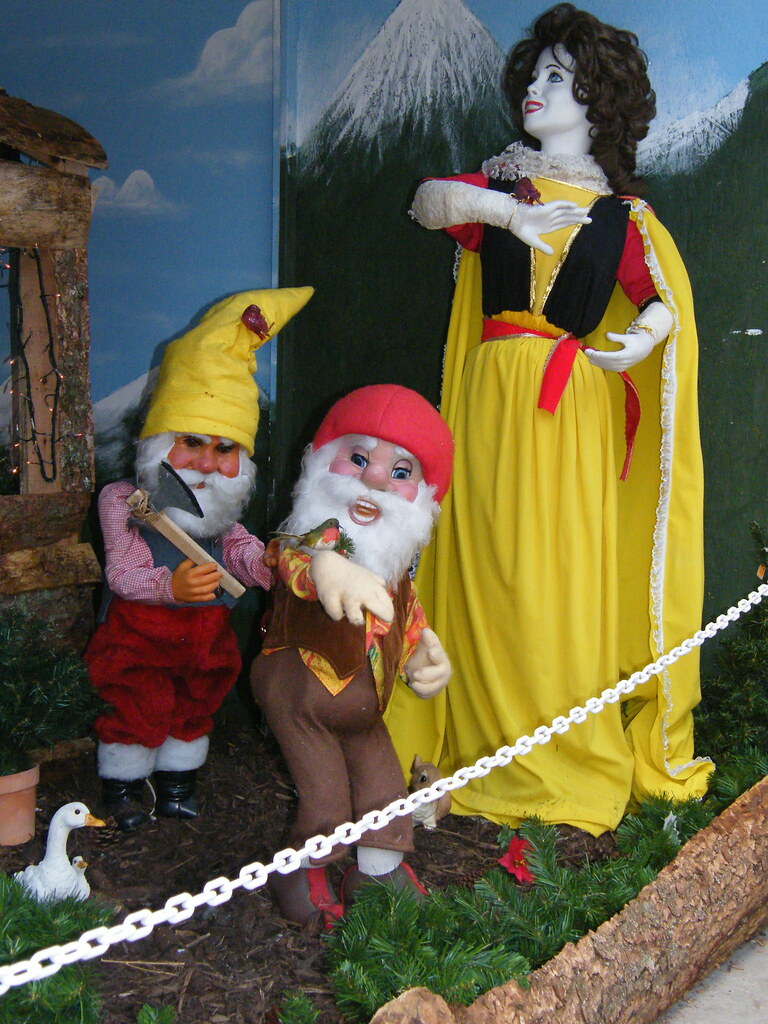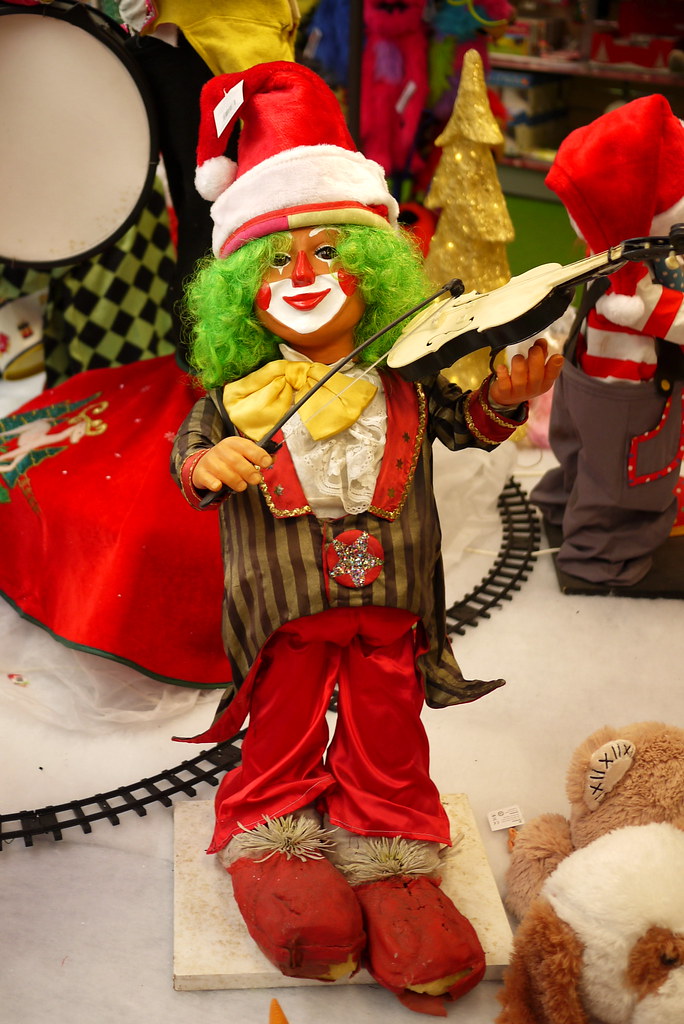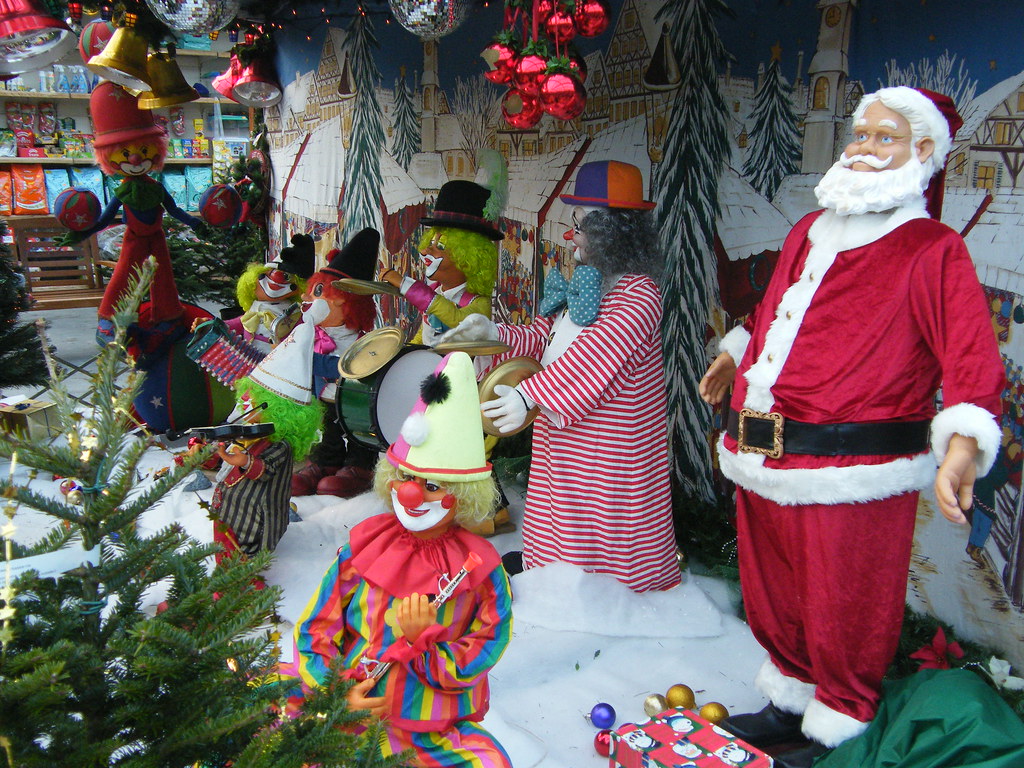Today, however, all is back to normal, and aside from some early flurries of snow this morning we've yet to experience the predicted blizzard. To make the most of it (and as a blatant excuse to get out the house) I decided to spend the afternoon at the garden centre, in order to glory in all things questionably festive in nature. Of course, I took the camera with me, because otherwise I cannot share in the glory of all that is of a questionable and disturbingly festive nature. Allow me to illustrate:
I have to admit, I can't blame the look on the poor wee kid's face at the back there. (Is the tallest clown...supposed to look 'red face'?)
This is something the local garden centre does every year - it's their 'Winter Wonderland' sort of thing, where they put up loads of random and often tenuously festive displays. Aside from the clowns, most of the scenes of recent years have been of various fairy tales that are popularly adapted for pantomimes (they're a popular festive form of entertainment here). This year it's all been toned down a little, the first year we went it was definitely the best. That year, we had homicidal dwarves:
Another year, there was what can only be described as a suggestively come hither Cinderella:
There was no Cinderella this year, but the dwarves were back again. Although alas, one of the dwarves certainly hasn't faired too well:
I can only imagine its injuries were the result of a heroic battle against the homicidal dwarf of previous years. A valiant defence of Snow White (a.k.a. Vampyra, I suspect), perhaps, for behold! She returned gloriously this year (after a few appearances with a mop for replacement hair), with the added bonus of a couple of pensive deer in tow:
It's perhaps safe to say that 'Snow White' has been taken to a somewhat literal extreme.
It's the clowns that really do it for me, though. I'm not sure quite why they might be considered festive, and they're something I've always found more than a little sinister in general (but especially so, after seeing Stephen King's IT when I was about thirteen or so), but the garden centre tends to go all out with them, for no apparent reason. This one is bad enough:
But this one takes first place for downright disturbing. If it were art, I would call it 'A Study in Sinister Nonchalance':
They move, you know. They all play happy and festive tunes and 'dance'. The first year there was this display:
And I swear to you, I swear that the clown at the the front there, it was making rude gestures of the self-pleasuring variety. With his flute. Poor Santa. Look at him there, edging uncomfortably away. Ho-Ho-Ho-ly Shit What The Fuck Am I Doing Here...
But it seems that for decency's sake, they've toned it down somewhat this year:
And now the clowns just want to eat your soul.
Outside, though, it's lovely:











